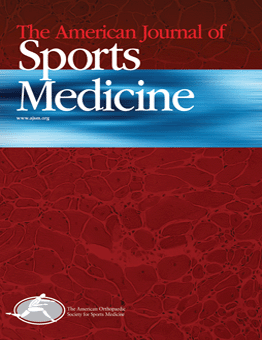
Conflicting Results on Drillhole Visibility by Imaging Method with PLLA vs PGA in Bankart Repair
Am J Sports Med. 2020 Jul;48(8):1865-1872Forty patients with unidirectional post-traumatic anterior shoulder instability scheduled for an arthroscopic Bankart repair between March 1998 and February 2001 were randomized to receive a fast absorbing polygluconate acid (PGA) tack or a slow absorbing polylevolactic acid (PLLA) tack for suture anchoring during procedure. The primary outcome of interest was drill hole volume and visibility. Secondary outcomes of interest included range of motion, as well as strength and patient reported outcomes. Assessment occurred 18 years post-operation. Results revealed no significant differences between groups in drill hole volume; however, a trend favoured the PGA tack group. Conflicting results were observed in drill hole visibility depending on the method of imaging used to assess outcomes. No significant differences in range of motion, strength, or patient reported outcomes were observed between the two groups.
Unlock the full ACE Report
You have access to {0} free articles per month.Click below to unlock and view this {1}
Unlock NowCritical appraisals of the latest, high-impact randomized controlled trials and systematic reviews in orthopaedics
Access to OrthoEvidence podcast content, including collaborations with the Journal of Bone and Joint Surgery, interviews with internationally recognized surgeons, and roundtable discussions on orthopaedic news and topics
Subscription to The Pulse, a twice-weekly evidence-based newsletter designed to help you make better clinical decisions
Exclusive access to original content articles, including in-house systematic reviews, and articles on health research methods and hot orthopaedic topics
Or upgrade today and gain access to all OrthoEvidence content for just $1.99 per week.
Already have an account? Log in


Subscribe to "The Pulse"
Evidence-Based Orthopaedics direct to your inbox.
{0} of {1} free articles
Become an OrthoEvidence Premium Member. Expand your perspective with high-quality evidence.
Upgrade Now












































































